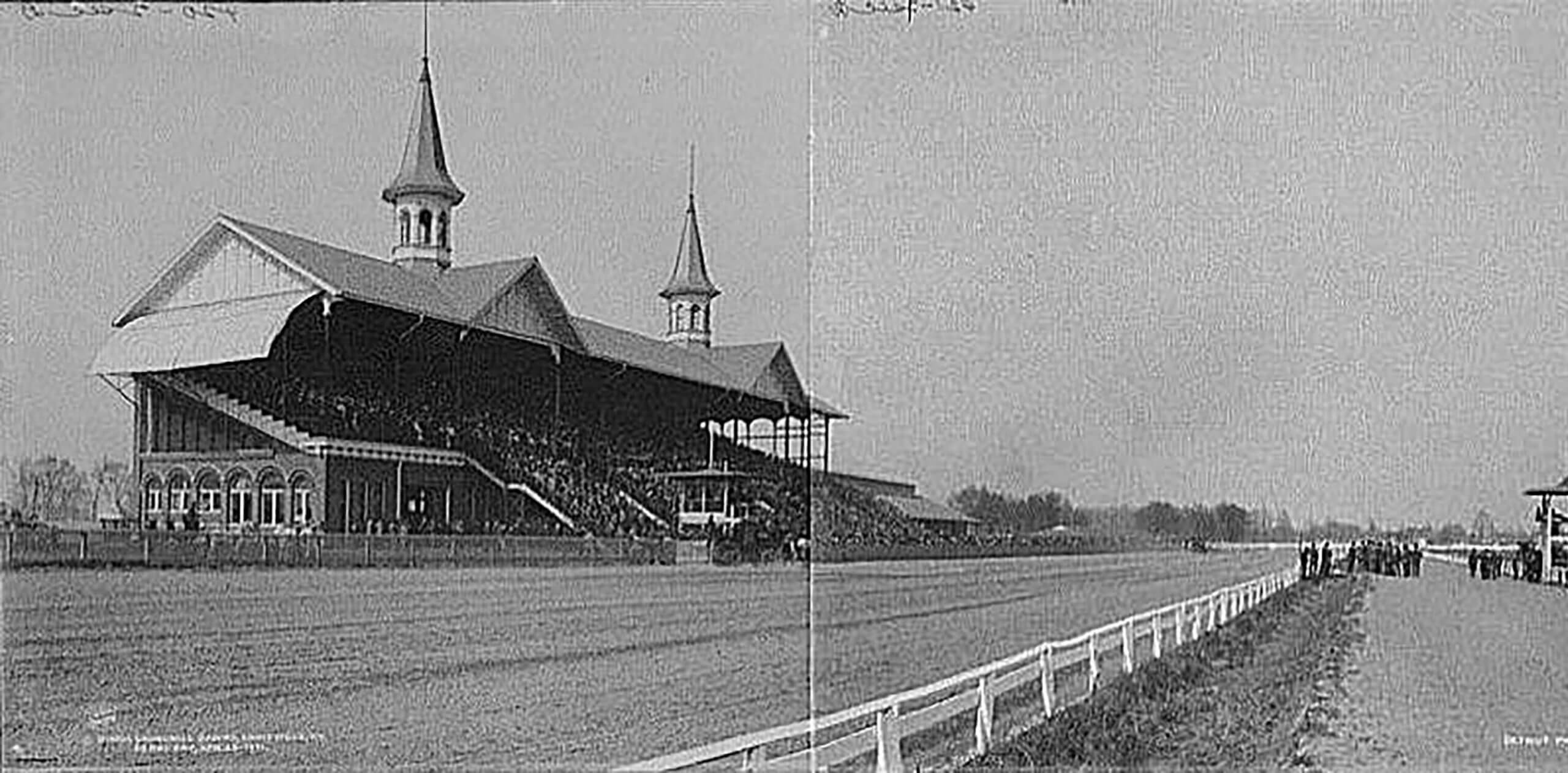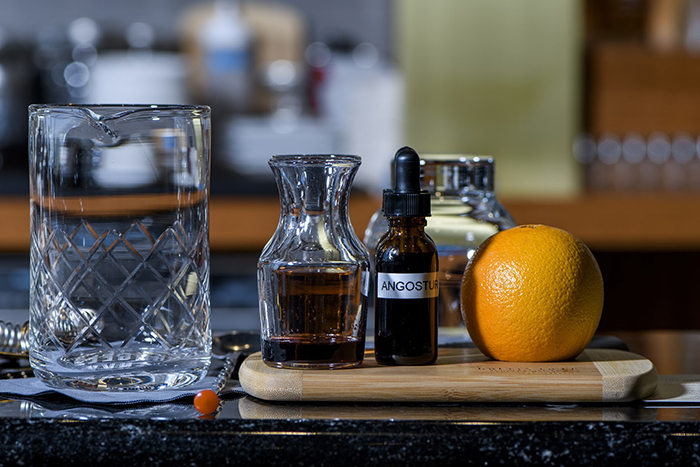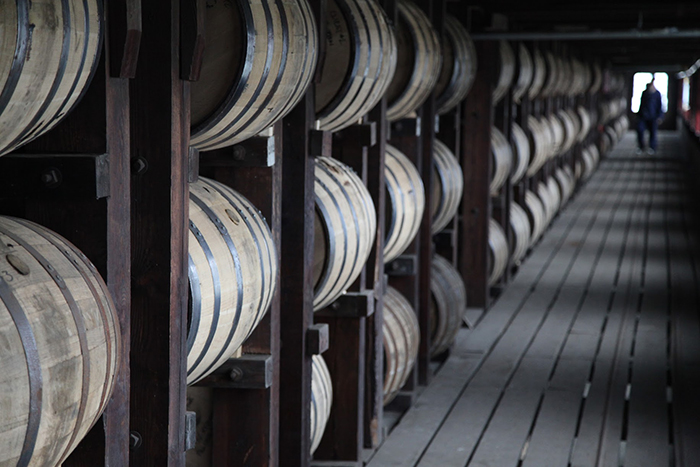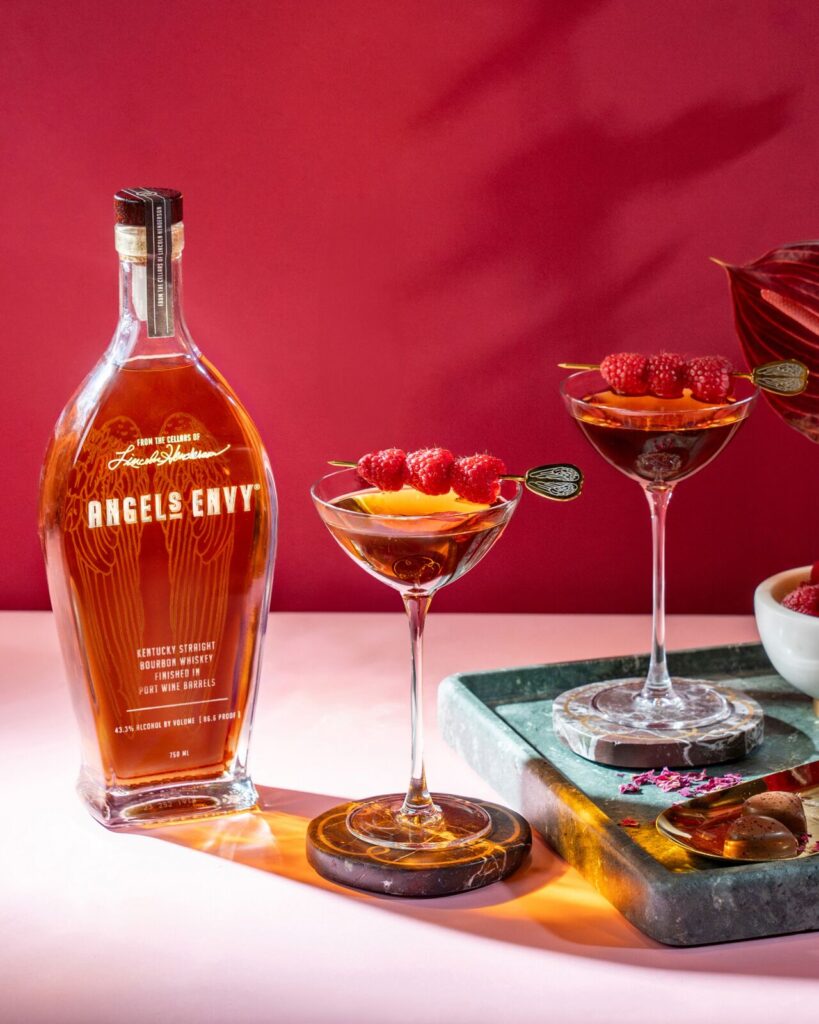Kentucky is good horse country. Maybe it’s the calcium rich water and the bluegrass, maybe it’s the hard work and dedication of generations of breeders and trainers. Today, the horses sired across the state’s gently rolling hills have a long history of excellence, but Kentucky wasn’t always horse country, and racing didn’t become big business for Kentucky until the late 1800s. Sure, there were a few smaller tracks, but Louisvillians were just as happy attending smaller, stranger, back alley races.
Up until the 1890s, racing was considered to be more of a wealthy, east coast pastime. But as populations swelled in the Northeast, moral and upright citizens began to call for bans on gambling—including horseracing. Savvy breeders and racing enthusiasts began to look west, particularly to states like Kentucky that had no qualms with gambling. By the late 19th century, entire breeding operations and thoroughbred nurseries began to spring up throughout the legally permissive hills of Kentucky.
It was around this time that Meriwether Lewis Clark, (grandson of the famous explorer William Clark, and namesake of his companion) decided to create a grand racing experience in the rural outskirts of Louisville. While travelling abroad, he’d been enamored with the high profile European racing circuits of France and England. Clark was determined to create the same proud tradition in his home state, and upon his return, he reached out to two bachelor uncles who had the means to help him. John and Henry Churchill had helped raise Clark and had instilled in him their passion for horse racing. They leased Clark the lands where Churchill Downs stands today, and worked to organize the Louisville Jockey Club. At the time, the grounds were situated along train tracks running between Louisville and Nashville, allowing for easy access to the track and making it an ideal location in spite of its relative remoteness.
The track opened to the public on May 17th, 1875 with the first running of the Kentucky Derby. At the time, the race was 1.5 miles—similar to the 2.4 kilometers run at England’s Epsom Derby. While the race gained popularity, it was never profitable, and Clark failed to recreate the grandeur he’d experienced in Europe. Twelve days before the running of the 1899 Kentucky Derby, Meriwether Lewis Clark took his own life.
In 1893, amidst financial troubles, Clark had sold the track to a syndicate led by an ex-bookkeeper named William Applegate. In 1895, this management group commissioned a new grandstand which included the iconic twin spires, constructed almost as an afterthought. The following year, they shortened the race to 1¼ mile—the distance we’re familiar with today. At the time, 1½ miles was considered too long and less exciting for the 3-year-old thoroughbreds most commonly raced. Under the savvy leadership of Col. Matt J. Winn, the Derby celebrated its first profit in 1903. Since then, two world wars and a great depression have failed to stop the running of the Kentucky Derby.
The crowd for the first Kentucky Derby was estimated to be 10,000 spectators. In 2017, 158,070 race fans crowded into the confines of Churchill Downs decked out in their Derby finery. It’s a race that has become so much more to the people of Louisville. It’s an opportunity to share with the world our hospitality, our exceptional dining, and particularly, our bourbon—all revolving around the inarticulate shouting of a breathless two-minute race (or what has been deemed “The Most Exciting Two Minutes in Sports”). If you’ve never had the chance to attend, we hope you make it. And if you have, then you know that there’s simply nothing else like it. From our family to yours, best of luck at Oaks and Derby this year. May your celebrations finish strong, but may your horses finish stronger.








